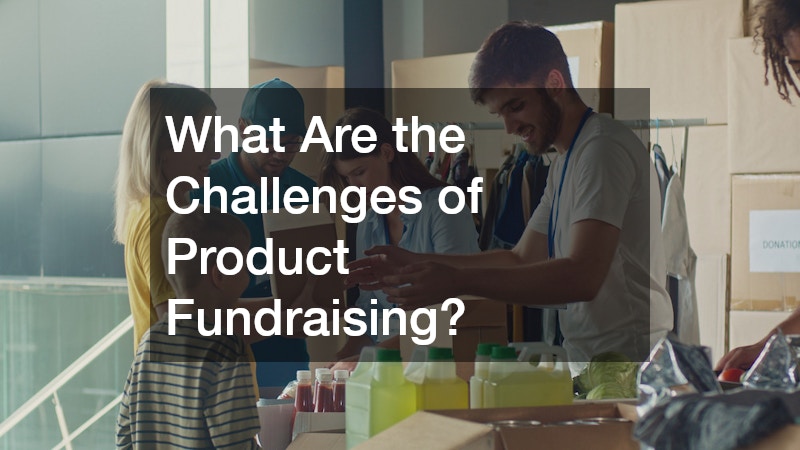
Product fundraising programs are innovative and engaging methods used by schools and youth organizations to support various educational and extracurricular activities. These programs are not only integral to providing additional opportunities for students but also serve as a critical financial resource that helps bridge the gap between available funding and the diverse needs of educational institutions. This article aims to highlight how these programs operate, their impact on children, and ways to overcome associated challenges while maximizing their benefits.
What Are Product Fundraising Programs?
Definition and Overview
Product fundraising programs are initiatives where schools and youth organizations sell products to raise funds for educational and extracurricular activities. These initiatives typically involve the collaboration of students, parents, and the broader community to reach their financial goals.
Such programs are usually coordinated by school staff and volunteers who work together to organize and execute sales campaigns. They provide a platform for students to develop skills in sales, teamwork, and communication as they actively participate in these initiatives.
Importantly, product fundraising programs facilitate a collective effort towards enriching educational experiences and supporting a wide range of student activities by securing additional funds
Types of Products Available
There are numerous types of products available for fundraising, with popular choices often including items like baked goods, magazine subscriptions, and handcrafted items. These products are selected for their appeal and practicality, ensuring maximum engagement and participation from the community.
Other options, such as seasonal gift items and personalized merchandise, offer unique selling points that can inspire broader community involvement. Schools and organizations often tailor their product offerings to align with community preferences and interests, thereby enhancing their fundraising success.
Through diverse product options, fundraising activities can cater to a wide audience, offering supporters a variety of choices to support their cause. This diversity in product offerings is key to maintaining interest and generating enthusiasm among potential buyers.
How Do Product Fundraisers Benefit Children?
Enhancing Educational Opportunities
The funds raised through these programs contribute directly to enriching the educational landscape, enabling schools to offer a wider array of learning experiences and resources. By providing financial assistance, schools can invest in new learning materials, educational technologies, and improved facilities.
Product fundraising also supports initiatives that would otherwise be unattainable through conventional school budgets. These opportunities create an enriched learning environment that nurtures student growth and success.
Through fundraising, schools can deliver innovative and diverse educational opportunities that inspire creativity and curiosity in children. This holistic approach to education ensures that students receive a well-rounded learning experience.
Supporting Extracurricular Activities
Product fundraising plays a crucial role in financing extracurricular activities, ensuring that students have access to a wide range of opportunities outside the traditional classroom setting. Sports programs, arts, clubs, and other extracurricular activities rely heavily on fundraising to cover their operational costs.
The support garnered through these programs helps offset costs related to equipment, travel, and event hosting, thereby promoting student participation and engagement. As a result, children can participate in programs that cultivate teamwork, creativity, and leadership skills through supported extracurricular activities.
Ultimately, product fundraising enables students to experience more fulfilling school lives, enriched by diverse activities that complement academic learning. These programs foster personal growth and provide students with valuable life skills they carry beyond their school years.
Why Are Product Fundraisers Important for Schools?
Bridging Funding Gaps
Schools often face significant financial challenges due to budget constraints, making it necessary to seek alternative funding avenues to continue offering essential programs. Product fundraising acts as a critical tool in bridging these funding gaps, ensuring that important educational services and activities are maintained.
By supplementing existing resources, schools can continue providing high-quality education and experiences that enrich student lives. The funds obtained through product fundraising often make the difference in maintaining or enhancing school programs.
Moreover, successful fundraising campaigns ensure that education remains accessible and inclusive, particularly in underfunded areas. Generating additional resources through fundraising empowers schools to offer equitable opportunities regardless of their financial standing.
Fostering Community Engagement
Product fundraisers engage parents, students, and community members by uniting them around a common goal. These initiatives foster collaboration and community spirit as all stakeholders work towards achieving the set fundraising targets.
The involvement of the broader community in these efforts creates bonds and a shared sense of purpose, building stronger relationships between schools and their communities. Fundraisers often become community events that involve various stakeholders, promoting a culture of mutual support and engagement.
Through these collective efforts, schools can establish lasting partnerships that positively impact educational outcomes. The sense of shared success and accomplishment reinforces the community’s commitment to supporting student initiatives.
What Are the Challenges of Product Fundraising?
Time and Resource Constraints
Organizing effective product fundraising campaigns can be challenging due to limited time and resources available to schools, teachers, and parent volunteers. The demands of planning, executing, and managing these campaigns often add to the existing workload of educators and staff.
Additionally, securing sufficient resources and support for organizing events can be equally taxing, requiring careful planning and coordination. The need to juggle these activities alongside educational responsibilities adds complexity to the process, highlighting the importance of strategic planning.
Overcoming Participation Hurdles
Participation hurdles often pose another significant challenge, as getting adequate involvement from students, parents, and the broader community is crucial to a fundraiser’s success. Motivating these groups requires clear communication of the goals and benefits of the fundraising program.
Creating a sense of excitement and urgency around the fundraising initiative can help overcome potential disinterest or reluctance from participants. Engaging students and parents in particular is essential, as they provide the primary driving force behind many successful campaigns.



